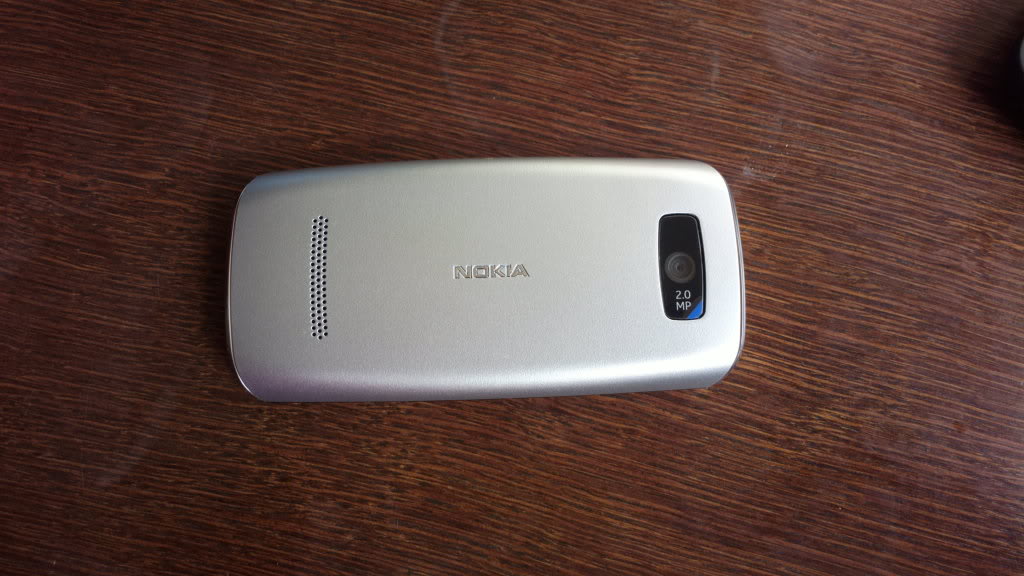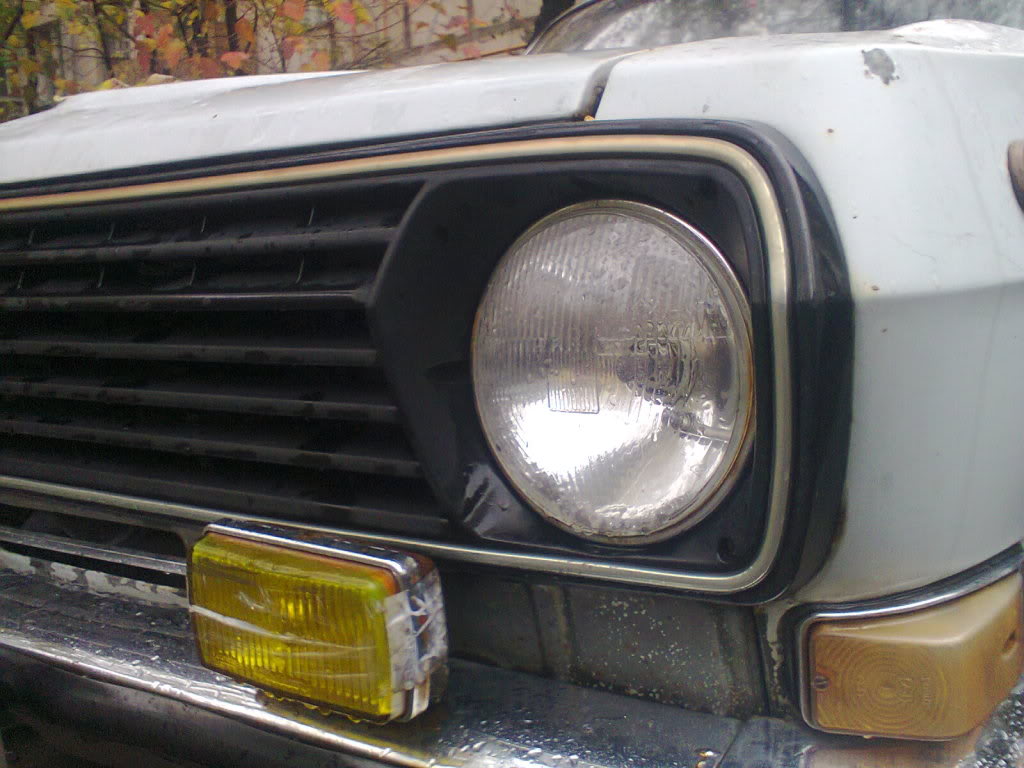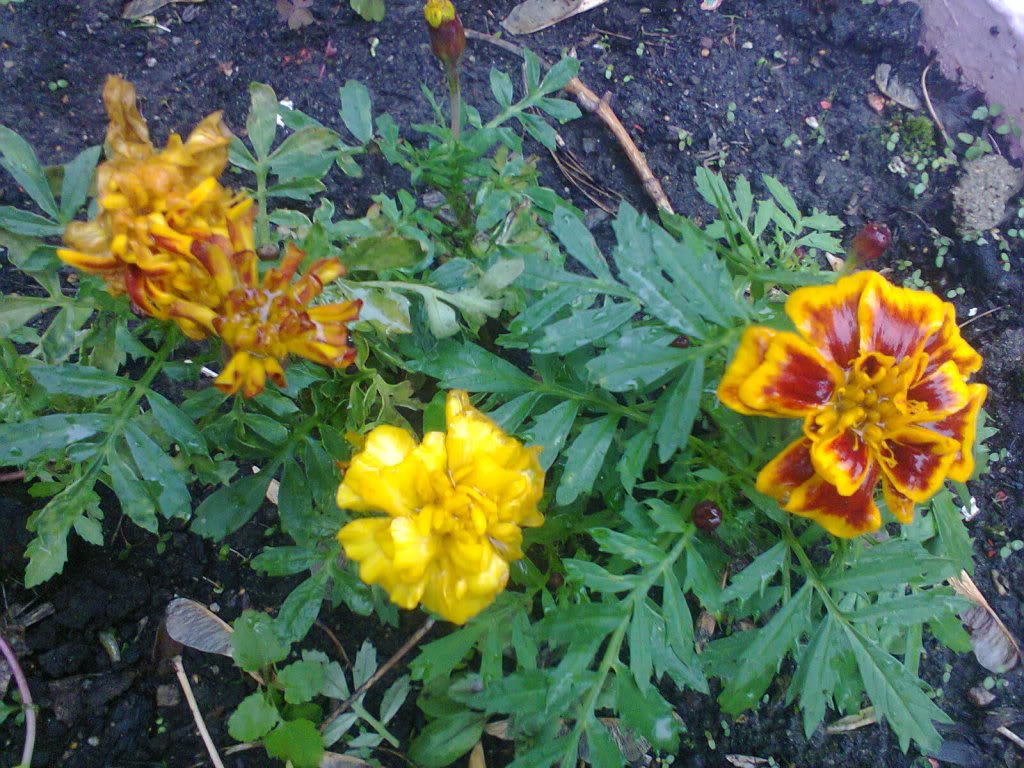The Return of Series 40
Recently, Nokia introduced two new models of its youngest line of Nokia Asha Touch: 308 and 309. Physically, these phones have not yet reached us, but the previous three models: 305, 306 and 311 have already been sold in the Russian Federation since late August. So I had the opportunity to get acquainted with this line, interesting not only in the price category, to which its products belong, but also in Series 40 software platform, which is used for the devices of this line, which is pretty much processed for touch control.

S40, - one of the earliest developments of Nokia. The first Nokia 7110 phone, which worked on the S40, was introduced already in 1999. It was a device whose direct predecessor was the legendary Nokia 8110, which became a cult thanks to the film The Matrix. And so, in the same year, when the Matrix marched triumphantly on the screens of the whole world, and the Nokia 8110 was as iconic a product as the iPhone was (or may still be) a couple of years ago, Nokia introduced the 7110 model, the first phone on the new Series 40 platform. Although, now Nokia itself prefers to lead the s40 story from the 7110 follower - the 7210 model, which already has color screen support.
From a stylistic point of view, 7110 did not repeat the success of the Matrix Phone, partly because it was simply impossible to repeat. However, from a technological point of view, the Nokia 7110 was, without exaggeration, a revolutionary device, because it was the first Nokia phone to implement support for WAP technology, which opened access from the phone to the Internet.
Over the past 13 years, 6 full-fledged Editions of the S40 software platform have been released. Some of these editions (such as the 3-rd edition, which appeared in 2005) had several sub-editions that introduced this or that functionality into new devices. In total, more than 200 phone models were released on the S40, and the total circulation of sold devices running on the S40 exceeded 1.5 billion copies. For comparison, about 500 million devices were sold on Android, and 400 million on iOS. Of course, they are significantly younger than the S40, but still.
However, throughout its history, the S40 has remained a platform only for keyboard devices. And so, at the end of last year, Nokia introduced the “tachev” version of the S40, which inherited a lot in the interface, as it turned out during the presentation, from the MeeGo Harmattan OS, which runs the Nokia N9 smartphone. That is why these budget models were of interest to me, and when they finally became available for the test, I asked to test them.
All devices of this line are positioned as very simple, I would even say the most minimalistic phones with touch controls. The target audience is designated as youth. Personally, I would argue with that. For teenagers from families that are not so wealthy that an eight-year-old boy should buy an iPhone, yes. But for the 18-year-old boy, in my opinion, is no longer there. On the other hand, in my opinion, these phones are very good just for the older generation. In any case, these are “entry-level sensors”, so to speak. The devices are aimed primarily at the markets of developing countries, India, for example, where, by the way, phones are manufactured.
Anyway, these are small devices with 3-inch displays, and, if in the case of the older, 311 models, a capacitive display is used, then in other models, it is resistive. As a protective coating, not Gorilla Glsas was used, but some very good protective plastic. Personally, I liked the 305 and 306 models much more in the design and materials used in the case, and in terms of hardware - 311, the older model. 305 and 306, for my taste, are really weak and s40 on them, either because of iron, or because of resistive displays, does not scroll so smoothly.
In general, if, looking ahead, I’ll immediately write about my conclusions, then I liked the lineup, I especially liked the S40 tachev version. The only thing that distinguishes these phones from smartphones is the lack of multitasking in the S40. But on the other hand, it is known that the same Android, and iOS in the vast majority of cases, when minimizing the application, freezes the processes, so that in the background the application hangs more formally, interfaceally, so to speak, rather than functionally. In this sense, the S40 is acting more honestly, closing applications, rather than minimizing them. Of course, there are exceptions: naturally you can simultaneously listen to music and browse the Internet, or read a book. The minimum required multitasking is still present. Otherwise, if we talk about the interface, then it is absolutely smartphone. Of course,
Well, now I propose to consider the phones themselves. And start with the older, 311 model.

Despite the swipe interface controls that the S40 inherited from the MeeGo Harmattan, Asha Touch phones are not without hardware buttons. There are two of them, the simplest: the receive and end buttons. The hold button also holds the function of turning the phone on and off. It is strange at the same time that the receive button does not activate the dialer interface with any other active application. Could this be done so that active programs do not involuntarily close? But, on the other hand, this could be implemented also, with a warning, how applications are closed when you click on the end button. The lock and unlock button on the display is located on the right side, and the volume rocker is also located there.




At the top there is a 2 mm jack for charging, a micro-USB connector for connecting to a computer. However, the phone can also be charged through it, both from a computer and from the network. Well and there, on the top end there is a 3.5 mm headphone jack. On the left side there is only a small hole for the strap. Case 311 models made of plastic. The back cover is glossy and rounded, which I personally did not really like.
The diagonal of the display in all three models is 3 inches, with a resolution of 240x400 pixels. The display recognizes 65 thousand colors. Multi-touch is present only in the Gallery. The browser window is scaled by double tap.

Nokia Browser is one of the main features of the S40 tacheva. It compresses up to 90% of the traffic, thereby saving the user money. At the same time, I will not say that the browser is very fast. With a Wi-Fi connection, it works quite tolerably, but with 3G it is very slow. Nevertheless, using this browser is quite real. There are also additional browsers in the Application Store, although of those that I tried, Nokia Browser still seemed to me the best.
The hardware of the 311 models is not as weak as it might seem. It is based on a 1 GHz processor, the amount of RAM is 256 MB, which is enough for the S40. The built-in memory is 128 MB, and the microSD slot supports cards up to 32 GB. In the delivery set, a 2 GB microSD card is attached to the models of the line.


Above the display are light and proximity sensors, just like adults. But the front camera in 311, as well as in the 305 and 306 models - no. The main camera in 311 models is 3.2 megapixels. Available as widescreen photo and video shooting, and with an aspect ratio of 4: 3. Here are the more detailed specifications of the Nokia Asha 311 camera’s photo and video files.
Photo:

Video:

Here are a few photos and video examples:




The phone is equipped with a 1100 mAh battery, which, with a very modest appetite for S40, lasts 2-3 days without problems. In general, I completely liked the older, 311 model of the new Nokia Asha Touch line. Not a smartphone yet, but already clearly not just a phone. A more detailed overview of this model can be found in two parts of this video:
These two models are strikingly different from the older one both in form and in the materials used. There is no longer any glossy plastic, only matte polycarbonate. Yes, and two hardware buttons do not protrude above the case but go flush with it.




The fundamental difference between the two models is the same: the 305 model does not have a Wi-Fi module, but has support for two SIM cards, and the 306 model has one SIM card slot, but is equipped with a Wi-Fi module.




In principle, the logic of manufacturers is clear: there are regions where Wi-Fi is not available, but with 3G more or less order. For this, basically, I think, there is a second SIM card slot. However, I’ll make a reservation that I personally do not understand anything about phones with two SIM cards. As a user, I have another problem: I’d like to use one and the same SIM card in all cases, moreover, so that it already stands in one device or another, and not rearrange it from one to another. So I will not dwell on the dual-sim 305 model, but I will consider both of these models as essentially one, since by the other characteristics they are indeed identical.
From 311 models they differ in the main camera. Here she is at all 2 megapixels. She takes pictures at the same time for posting on the Internet more or less acceptable.





But the video shoots frankly weak. Or is it just that we have already lost the habit of such a video image? But even if so, then thank God that we are no longer used to it. Looking at such a picture is really hard.
Moreover, in the case of photos and in the case of video, in these models there is no widescreen shooting mode. True, the duration of the video, as in the 311 models, is limited only by the amount of free space on the miroSD-card.
I still could not figure out which processor is installed in these two younger models. It is possible that it is the same as in the 311 model, and the difference in speed and responsiveness is due to the resistive display and the smaller amount of internal memory. Its in these models is 10 MB at all, which, of course, is very small.
A more detailed overview of the Nokia Asha Touch 305 and 306 models can be seen in this video:
I understand that I didn’t have a fully-fledged test, but what’s grown is what’s called. Thinking about this new line of Nokia after the test, I came to the following conclusions.
Firstly, I really liked the S40 tachev version. The interface is really convenient and elegant. Despite the small diagonal of the display, the keyboard in both vertical and horizontal layout is very comfortable. Anyway, I think the return of the S40 in the tachev version has taken place and promises a full-fledged new life.
You can look at the interface and functionality of the S40 in detail in 4 parts of this video:
Another thing is the devices themselves. Hand on heart, I didn’t like 100% of any of the phones. The eldest, 311 model, in my opinion, is quite suitable for use and can even compete with cheap Chinese smartphones on Android. But for younger models, I would definitely prefer the Nokia Asha keyboards.
If they asked me, I would try to release a more powerful model based on the S40, with a display with an adequate diagonal and resolution, with a 5 megapixel camera and with an appearance that looks more like 305 and 306 models, and not 311. Although, this too, how to say, because the taste and color of comrades are not, as you know. However, I am sure that these models will find their customers. On my own I would personally recommend that you pay attention to the 311 model, which, in my opinion, is absolutely self-sufficient.


History
S40, - one of the earliest developments of Nokia. The first Nokia 7110 phone, which worked on the S40, was introduced already in 1999. It was a device whose direct predecessor was the legendary Nokia 8110, which became a cult thanks to the film The Matrix. And so, in the same year, when the Matrix marched triumphantly on the screens of the whole world, and the Nokia 8110 was as iconic a product as the iPhone was (or may still be) a couple of years ago, Nokia introduced the 7110 model, the first phone on the new Series 40 platform. Although, now Nokia itself prefers to lead the s40 story from the 7110 follower - the 7210 model, which already has color screen support.
From a stylistic point of view, 7110 did not repeat the success of the Matrix Phone, partly because it was simply impossible to repeat. However, from a technological point of view, the Nokia 7110 was, without exaggeration, a revolutionary device, because it was the first Nokia phone to implement support for WAP technology, which opened access from the phone to the Internet.
Over the past 13 years, 6 full-fledged Editions of the S40 software platform have been released. Some of these editions (such as the 3-rd edition, which appeared in 2005) had several sub-editions that introduced this or that functionality into new devices. In total, more than 200 phone models were released on the S40, and the total circulation of sold devices running on the S40 exceeded 1.5 billion copies. For comparison, about 500 million devices were sold on Android, and 400 million on iOS. Of course, they are significantly younger than the S40, but still.
However, throughout its history, the S40 has remained a platform only for keyboard devices. And so, at the end of last year, Nokia introduced the “tachev” version of the S40, which inherited a lot in the interface, as it turned out during the presentation, from the MeeGo Harmattan OS, which runs the Nokia N9 smartphone. That is why these budget models were of interest to me, and when they finally became available for the test, I asked to test them.
First look
All devices of this line are positioned as very simple, I would even say the most minimalistic phones with touch controls. The target audience is designated as youth. Personally, I would argue with that. For teenagers from families that are not so wealthy that an eight-year-old boy should buy an iPhone, yes. But for the 18-year-old boy, in my opinion, is no longer there. On the other hand, in my opinion, these phones are very good just for the older generation. In any case, these are “entry-level sensors”, so to speak. The devices are aimed primarily at the markets of developing countries, India, for example, where, by the way, phones are manufactured.
Anyway, these are small devices with 3-inch displays, and, if in the case of the older, 311 models, a capacitive display is used, then in other models, it is resistive. As a protective coating, not Gorilla Glsas was used, but some very good protective plastic. Personally, I liked the 305 and 306 models much more in the design and materials used in the case, and in terms of hardware - 311, the older model. 305 and 306, for my taste, are really weak and s40 on them, either because of iron, or because of resistive displays, does not scroll so smoothly.
In general, if, looking ahead, I’ll immediately write about my conclusions, then I liked the lineup, I especially liked the S40 tachev version. The only thing that distinguishes these phones from smartphones is the lack of multitasking in the S40. But on the other hand, it is known that the same Android, and iOS in the vast majority of cases, when minimizing the application, freezes the processes, so that in the background the application hangs more formally, interfaceally, so to speak, rather than functionally. In this sense, the S40 is acting more honestly, closing applications, rather than minimizing them. Of course, there are exceptions: naturally you can simultaneously listen to music and browse the Internet, or read a book. The minimum required multitasking is still present. Otherwise, if we talk about the interface, then it is absolutely smartphone. Of course,
Well, now I propose to consider the phones themselves. And start with the older, 311 model.
Nokia Asha Touch 311

Despite the swipe interface controls that the S40 inherited from the MeeGo Harmattan, Asha Touch phones are not without hardware buttons. There are two of them, the simplest: the receive and end buttons. The hold button also holds the function of turning the phone on and off. It is strange at the same time that the receive button does not activate the dialer interface with any other active application. Could this be done so that active programs do not involuntarily close? But, on the other hand, this could be implemented also, with a warning, how applications are closed when you click on the end button. The lock and unlock button on the display is located on the right side, and the volume rocker is also located there.




At the top there is a 2 mm jack for charging, a micro-USB connector for connecting to a computer. However, the phone can also be charged through it, both from a computer and from the network. Well and there, on the top end there is a 3.5 mm headphone jack. On the left side there is only a small hole for the strap. Case 311 models made of plastic. The back cover is glossy and rounded, which I personally did not really like.
The diagonal of the display in all three models is 3 inches, with a resolution of 240x400 pixels. The display recognizes 65 thousand colors. Multi-touch is present only in the Gallery. The browser window is scaled by double tap.

Nokia Browser is one of the main features of the S40 tacheva. It compresses up to 90% of the traffic, thereby saving the user money. At the same time, I will not say that the browser is very fast. With a Wi-Fi connection, it works quite tolerably, but with 3G it is very slow. Nevertheless, using this browser is quite real. There are also additional browsers in the Application Store, although of those that I tried, Nokia Browser still seemed to me the best.
The hardware of the 311 models is not as weak as it might seem. It is based on a 1 GHz processor, the amount of RAM is 256 MB, which is enough for the S40. The built-in memory is 128 MB, and the microSD slot supports cards up to 32 GB. In the delivery set, a 2 GB microSD card is attached to the models of the line.


Above the display are light and proximity sensors, just like adults. But the front camera in 311, as well as in the 305 and 306 models - no. The main camera in 311 models is 3.2 megapixels. Available as widescreen photo and video shooting, and with an aspect ratio of 4: 3. Here are the more detailed specifications of the Nokia Asha 311 camera’s photo and video files.
Photo:

Video:

Here are a few photos and video examples:




The phone is equipped with a 1100 mAh battery, which, with a very modest appetite for S40, lasts 2-3 days without problems. In general, I completely liked the older, 311 model of the new Nokia Asha Touch line. Not a smartphone yet, but already clearly not just a phone. A more detailed overview of this model can be found in two parts of this video:
Nokia Asha Touch 305 and 306
These two models are strikingly different from the older one both in form and in the materials used. There is no longer any glossy plastic, only matte polycarbonate. Yes, and two hardware buttons do not protrude above the case but go flush with it.




The fundamental difference between the two models is the same: the 305 model does not have a Wi-Fi module, but has support for two SIM cards, and the 306 model has one SIM card slot, but is equipped with a Wi-Fi module.




In principle, the logic of manufacturers is clear: there are regions where Wi-Fi is not available, but with 3G more or less order. For this, basically, I think, there is a second SIM card slot. However, I’ll make a reservation that I personally do not understand anything about phones with two SIM cards. As a user, I have another problem: I’d like to use one and the same SIM card in all cases, moreover, so that it already stands in one device or another, and not rearrange it from one to another. So I will not dwell on the dual-sim 305 model, but I will consider both of these models as essentially one, since by the other characteristics they are indeed identical.
From 311 models they differ in the main camera. Here she is at all 2 megapixels. She takes pictures at the same time for posting on the Internet more or less acceptable.





But the video shoots frankly weak. Or is it just that we have already lost the habit of such a video image? But even if so, then thank God that we are no longer used to it. Looking at such a picture is really hard.
Moreover, in the case of photos and in the case of video, in these models there is no widescreen shooting mode. True, the duration of the video, as in the 311 models, is limited only by the amount of free space on the miroSD-card.
I still could not figure out which processor is installed in these two younger models. It is possible that it is the same as in the 311 model, and the difference in speed and responsiveness is due to the resistive display and the smaller amount of internal memory. Its in these models is 10 MB at all, which, of course, is very small.
A more detailed overview of the Nokia Asha Touch 305 and 306 models can be seen in this video:
Thoughts after the test
I understand that I didn’t have a fully-fledged test, but what’s grown is what’s called. Thinking about this new line of Nokia after the test, I came to the following conclusions.
Firstly, I really liked the S40 tachev version. The interface is really convenient and elegant. Despite the small diagonal of the display, the keyboard in both vertical and horizontal layout is very comfortable. Anyway, I think the return of the S40 in the tachev version has taken place and promises a full-fledged new life.
You can look at the interface and functionality of the S40 in detail in 4 parts of this video:
Another thing is the devices themselves. Hand on heart, I didn’t like 100% of any of the phones. The eldest, 311 model, in my opinion, is quite suitable for use and can even compete with cheap Chinese smartphones on Android. But for younger models, I would definitely prefer the Nokia Asha keyboards.
If they asked me, I would try to release a more powerful model based on the S40, with a display with an adequate diagonal and resolution, with a 5 megapixel camera and with an appearance that looks more like 305 and 306 models, and not 311. Although, this too, how to say, because the taste and color of comrades are not, as you know. However, I am sure that these models will find their customers. On my own I would personally recommend that you pay attention to the 311 model, which, in my opinion, is absolutely self-sufficient.

